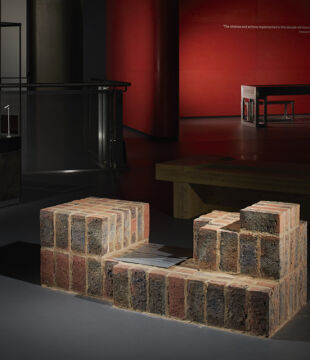
Details
Location: West Bromwich
Brick Manufacturer: Northcot Brick
Brick Names: Regency Orange Machine-Made, Brickfield Orange Handmade
Architect: APEC Architects Ltd
Brickwork Contractor: Midland Masonry
About the project
West Bromwich Town Hall and Library, originally designed by Alexander & Henman 1874-75, with the library by Weller and Proud, is a testament to Italian Gothic architecture and a symbol of the town’s heritage.
The restoration of the Grade II-listed heritage buildings for Sandwell Metropolitan Borough Council was funded by the Government’s Towns fund programme.
Designed by APEC Architects, the £6.9m project was delivered by Morgan Sindall (working with Midland Masonry, Henley Restoration & Remedials and NRA Roofing) through the Construction West Midlands II framework. Contract administration was by the Council's Urban Design & Building Services.
The aim was to preserve the buildings’ fine architectural features, while adapting them for modern community use to revitalise the town’s main cultural quarter.
Preserving the building’s historic integrity involved traditional craftsmanship, modern preservation techniques, and sympathetic replacement materials.
Essential work included detailed timberwork, repair and replacement of the slate roof and leadwork on the dome of the cupola, 200 windows (some measuring 3m x 2m with intricate stained glass), and restoration of the terracotta colonnade on the Town Hall tower, one of the building’s striking features.
Extensive stonework repair and replacement included recreating historic carvings and a roof finial, missing since 1916, which APEC Architects redesigned based on a 100-year-old photograph.
Almost all areas of existing brickwork required conservation work, with the severity varying according to the phasing of the original buildings and rate of weathering. Extensive repointing and renewal were carried out at height on the main facades and structures, including the main chimney. Hundreds of isolated bricks were cut out and replaced.
Northcot created two brick blends in imperial sizes: machine-made Regency Orange and handmade Brickfield Orange. These were selected to match the colour, texture variations, and precision of the existing brickwork in different parts of the building, ranging from the fine-quality, thin-jointed brickwork on the principal elevation to the highly variable, lower-quality concealed brickwork to the rear of the building.
Ornate brick detailing requiring replacement included decorative string courses, banding, arch details, bricks with embossed fleur-de-lis patterns, bullnose ledges, and dentil courses, with further custom specials required to form interior and exterior corners.
Many had eroded, but where the original detail remained, the brick specials were carefully removed and sent to Northcot for templating and moulding to create new matches. Northcot made sixteen types of special bricks, which, despite their size and intricacy, were made by hand as one unit.
Many of the materials from the original building were retained or reused to help reduce the embodied carbon impact.
• 219T carbon saved
• 46/45 Considerate Constructors Scheme score (+1 Innovation Point)
• 252 Local community volunteering hours donated
• 99.76% Waste diverted from landfill
• It was a diesel-free site. Temporary site offices were set up within the existing building to reduce energy expenditure.
The project delivered £5.5m in social value. 50% of the supply chain spending was within 20 miles of the project. 35 local crafts and tradespeople, 18 work experience students, and seven apprentices were involved. Several community initiatives were carried out. Donations were given to charitable organisations.
Sponsored by Northcot Brick

















